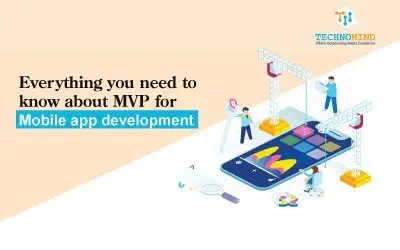Blog
How Much Does It Cost to Develop An Expense Tracking App?
Who keeps a daily cost log in their pocket and keeps it open at all times. Additionally, this is not the time to keep an offline account of your costs. When the majority of purchases are now made online, pulling out that pocket diary every time you make a purchase is both unnecessary and absurd. Entrepreneurs who want to invest in a practical Fintech app now have the opportunity to do so while also learning how much it would cost to create an expense monitoring app and determining whether it would be feasible.
But in order to determine whether a Fintech startup is feasible, it is best to learn about the need for and usability of the app that will track your costs.
In this blog, we will take a look at the Expense tracking app and its development cost. Let’s begin with understanding what is Expense tracking app and how it works.
What is an Expense Tracking App and How Does it Work?
An expense tracking app is a digital tool designed to help individuals or businesses track and manage their expenses. It simplifies the process of recording and categorizing expenses, providing users with a clear overview of their spending habits and financial health.
Here’s how an expense-tracking app typically works:
User Registration and Profile Setup:
When a user first installs the app, they will typically go through a registration process. This involves creating an account with their email address or linking it to their social media accounts. Users may also set up a profile, providing additional information such as their name, currency preference, and financial goals.
Expense Entry:
Once registered, users can start adding expenses to the app. They can manually enter expense details, such as the amount spent, the date, and a brief description. Some apps also allow users to take photos of receipts, which can be automatically scanned and stored for reference.
Expense Categorization:
Expense tracking apps often provide predefined categories (e.g., groceries, transportation, utilities) to help users classify their expenses. Users can assign each expense to a relevant category, ensuring a clear breakdown of their spending habits. Some apps may also offer the option to create custom categories for more personalized tracking.
Budgeting and Goal Setting:
To effectively manage their finances, users can set budgets within the app. These budgets define spending limits for specific categories or overall expenses. The app can provide real-time notifications or alerts when users approach or exceed their budget limits. Additionally, users may set financial goals, such as saving a specific amount or reducing spending in a particular category.
Data Visualization and Reports:
Expense tracking apps often provide visual representations of users’ spending patterns and financial performance. These can include charts, graphs, and reports that summarize spending by category, compare expenses over time, or display progress toward goals. Such visualizations help users gain insights into their financial habits and make informed decisions.
Data Synchronization:
Many expense tracking apps offer synchronization across multiple devices. This allows users to access their expense data seamlessly from their smartphones, tablets, or web browsers. Synchronization ensures that any changes or updates made on one device are reflected across all devices linked to the user’s account.
Integration with Financial Institutions:
To streamline the expense tracking process, some apps integrate with users’ bank accounts or credit cards. This integration enables the automatic importing of transactions, eliminating the need for manual entry. The app securely connects to the financial institution’s API to fetch transaction data, which can then be categorized and analyzed within the app.
Security and Privacy:
Expense tracking apps prioritize the security and privacy of user data. They implement encryption techniques, secure data storage, and user authentication methods to protect sensitive financial information. Users’ data is typically stored on secure servers and anonymized for analytics purposes.
Reminders and Notifications:
Expense tracking apps may include reminder features to prompt users to enter their expenses regularly. These reminders help ensure accurate and up-to-date tracking. Additionally, apps can send notifications related to budget limits, goal progress, or any important updates.
Ongoing Updates and Support:
Developers regularly update expense tracking apps to introduce new features, improve performance, and fix bugs. Users can typically expect ongoing support and access to new versions of the app to enhance their overall experience.
By combining these features and functionalities, expense tracking apps provide users with a comprehensive tool to monitor and manage their expenses, promote financial discipline, and achieve their financial goals.
Estimated Cost of Development of An Expense Tracking App
The cost of developing expense tracking software depends on a number of aspects that are involved in the process. The cost of the development process varies depending on the stage. An expense tracing apps total development cost can be difficult to estimate. But here’s what we’ve learned from our years of experience: It can cost anywhere from $8000 and $150000 to develop an expense monitoring software. Additionally, the price would rise as the number of features and functionalities grew.
The wide range is due to a number of elements that affect the price, such as the complexity of the app, the features it includes, the platform used for development, the fees and expertise of the developer, etc.
Conclusion
The cost of developing an expense tracking app can vary significantly depending on various factors such as the complexity of features, the platform(s) targeted, the development approach, and the team’s expertise. While there is no fixed price for app development, it is essential to invest in a well-defined development process, user-centric design, and robust backend infrastructure to ensure the app’s success. Moreover, ongoing maintenance, updates, and user support should be considered as part of the overall cost.
Ultimately, by carefully considering the requirements, setting a realistic budget, and collaborating with experienced developers, you can develop an expense tracking app that meets your specific needs and provides value to both individual users and businesses.
Have an idea in your mind about developing an expense-tracking app? Let’s discuss.
Everything you need to know about MVP for Mobile app development
Every business nowadays want to expand their reach in digital world and doing that in a better way, one of the good option is to…
Mobile App Development for Start-ups – What, Why and How?
Mobile applications are becoming more and more essential to the expansion and success of organizations, especially startups. Since…
How to Develop a Healthcare app?
Can you imagine a world where healthcare services are just a tap away on your smartphone? As technology continues to revolutionize various…



0 Comments